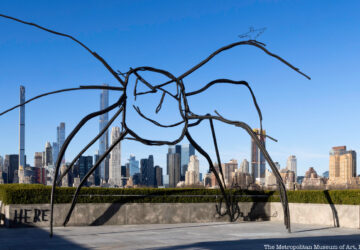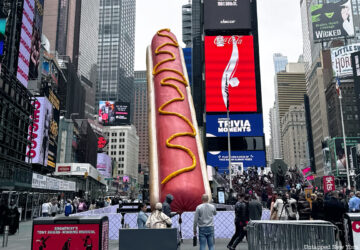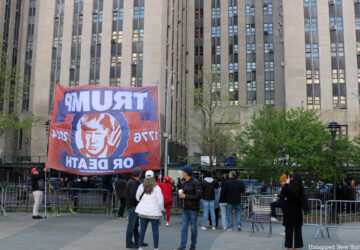The threat of rising sea levels and other hazards associated with climate change are challenges that New York City, as a waterfront community, must face head on. At the 2019 Waterfront Conference this week, policy makers, artists, professionals, academics and community members showed how different industries and agencies are rising to the challenge with innovative solutions to these challenges. While sailing around the coasts of southern Manhattan, eastern New Jersey and Staten Island aboard the Hornblower Infinity, speakers discussed the efficacy of managed retreat, solutions for “sunny day flooding,” guidelines that will bolster the infrastructure of our parks, and other ways to make New York City’s waterfront more resilient in the face of “Rising Seas, Rising Risks,” the theme of this year’s conference.
Through a series of panels, speeches and demonstrations, climate change and its effect on New York City were examined through various lenses, from government and finance, to art and media as well as community activism and technology. After welcome remarks from Waterfront Alliance President and CEO Roland Lewis, keynote presentations were given by comedian Chuck Nice and William Solecki Ph. D. Standing atop two chairs, Nice excitedly addressed the morning crowd and stressed the importance of using marketing to get young people involved with the green movement. He teased a large project in the works aimed at bringing awareness of climate change to the public through a pop up experience in New York City featuring augmented reality.
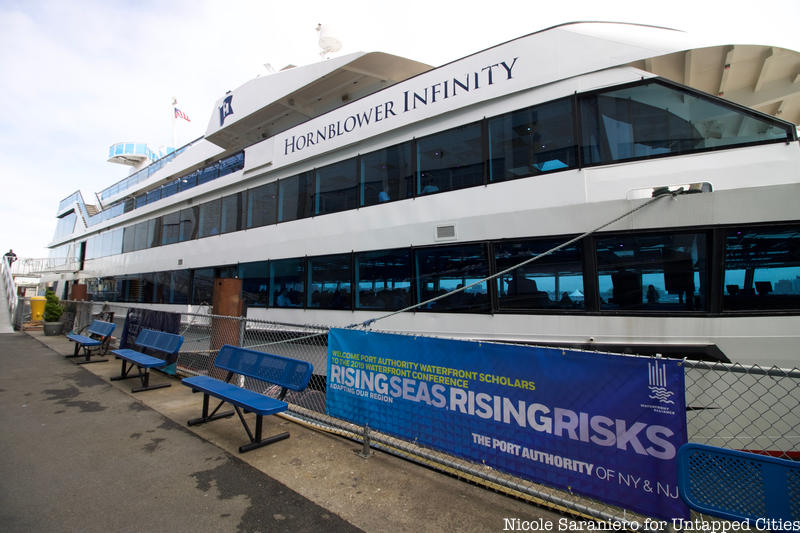
Solecki set the scene of New York City’s risks by going over the findings of recent climate reports while stressing that though the predictions are daunting, we should be hopeful. Solecki pointed out that cities have a great response capacity, citing how much the waterfront has changed for the better in just the past ten years. “We need to think more positively and not think about it as a challenge, but think back to the transformative qualities of the waterfront and see how we can advance our interests not just in terms of its use, but also its resiliency,” he said. In a conversation with journalist Janet Babin, New York City comptroller Scott. M. Stringer echoed Solecki’s sentiment, adding that “The future can’t take fifty years. We have to think differently now.” Stringer emphasized the need to invest in the green economy.
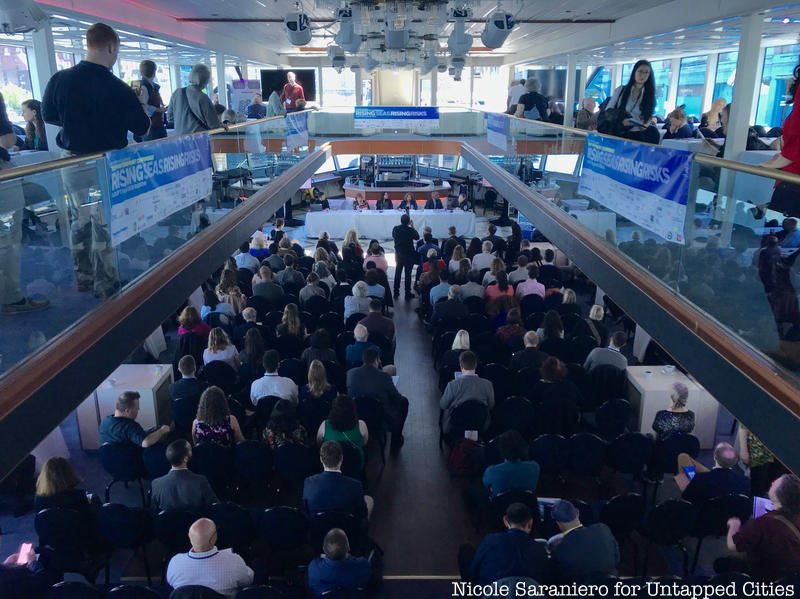
Another notable official present at the Waterfront Conference was New York City Parks Commissioner Mitchell J. Silver who highlighted recent park projects that have been successful in implementing new climate resilient features. New York City Parks is the largest waterfront landowner in New York City with 160 miles of waterfront property. Silver, as did many speakers throughout the day, cited Superstorm Sandy as a major learning experience. One project Silver highlighted was Hunters Point South Park, a park in Long Island City designed by SWA/Balsley which opened in June of 2018. The park spans a total of eleven acres and features areas of ecological restoration, public access to the water, and built-in flood protection with elevated sections of the park. The park embodies the Parks Department’s new standards for design which include parameters like providing direct waterfront access to the public while also making the waterfront resilient and “Planning for the norm, not just the storm.”
In addition to our parks, our buildings need to be greener and more resilient as well. Urban areas present a unique challenge when dealing with climate issues, since cities are densely populated and contain many historic buildings. In addition to having strict emissions guidelines for new construction, retrofit mandates have been implemented to create new energy performance standards for existing buildings to help drive down carbon emissions.
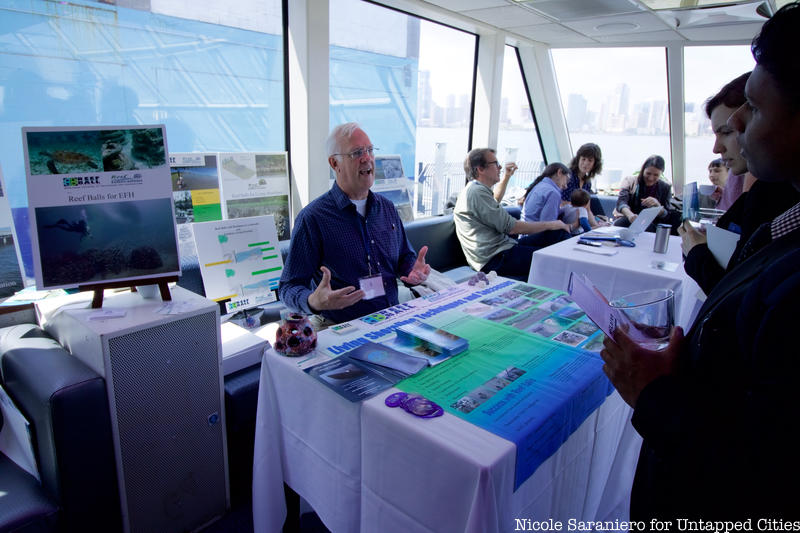
“Facts and figures aren’t enough. People need to connect emotionally,” said Peter Kasabach, Executive Director of New Jersey Future and a member of the Waterfront Alliance’s Resiliency Task Force. One way people can connect to climate change on an emotional level is through art. This was the topic of a panel moderated by Untapped Cities Founder Michelle Young. One of the speakers on the panel was Nathan Kensinger, a photographer, filmmaker and artist who has been working on various climate change related projects for the past fifteen years, including a short film, Managed Retreat. Managed Retreat is a short documentary film which shows, without narration, the managed retreat taking place in neighborhoods on the coast of Staten Island. Another project discussed was Jon Leland’s crowdfunded sticker campaign, This Place Will Be Water. Over 8,000 biodegradable stickers have appeared in eighteen different countries around the world, forcing people “to think about the issue even if they don’t want to,” said Leland.
One of the most important ways climate art can reach a wide audience is through partnerships with different organizations, such as the Climate Museum. One art initiative the museum took part in was Climate Signals by artist Justin Brice Guariglia. The piece consisted of ten electronic traffic alert signs places in sites across all five boroughs, such as Flushing Meadows-Corona Park, Snug Harbor on Staten Island, and St. Nicholas Park in Harlem.
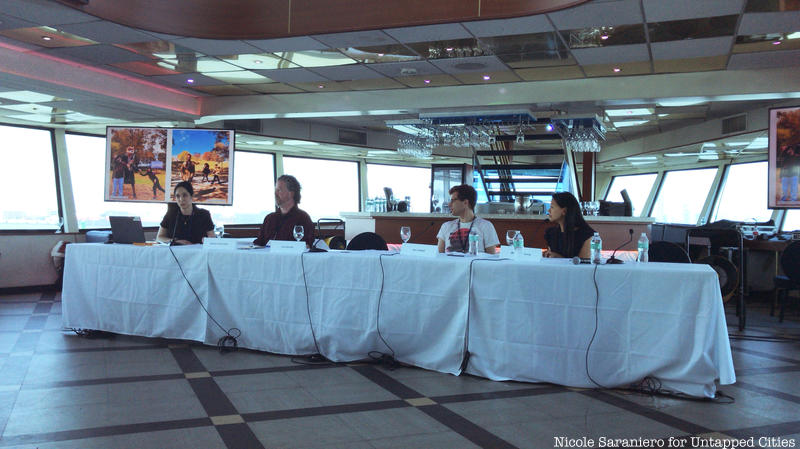
The Waterfront Conference showed that rising sea levels is not just one specific problem and there is not one specific solution. What rising sea levels and warmer climates cause are more powerful storms, decreasing biodiversity, food scarcity, and a host of other problems. However, though climate predictions may seem dire, current initiatives and future plans for how to deal with changes are ambitious, such as Governor Cuomo’s goal for New York of 100% carbon-free electricity by 2040. Making our waterfront communities more resilient will take the cooperation of government agencies, corporate industries, and private citizens enforcing a combination of awareness, preparation, and decisive action. You can stay up to date on the latest waterfront news with the Waterfront Alliance.
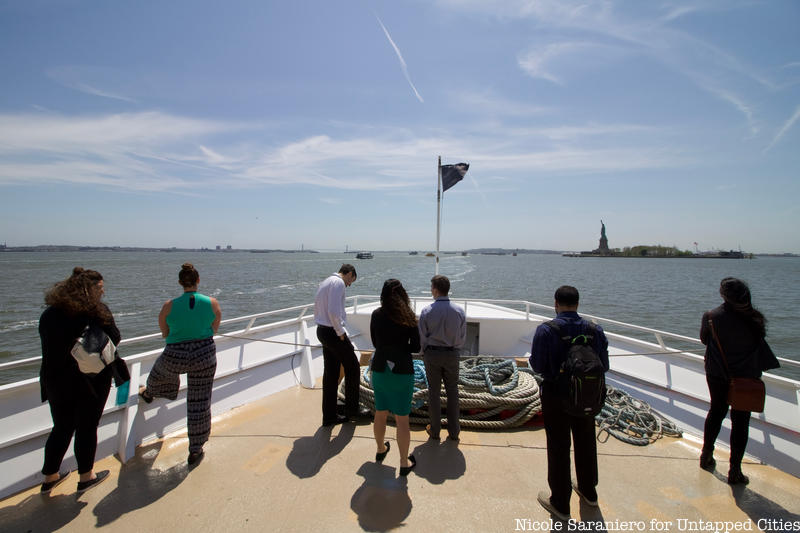
Next, check out The Top 10 Secrets of the Hudson River, NYC and The Top 10 Secrets of the East River, NYC
